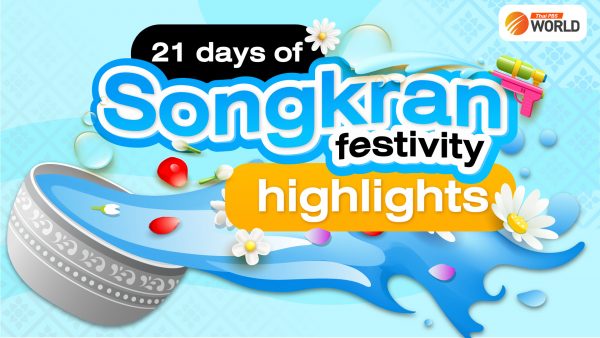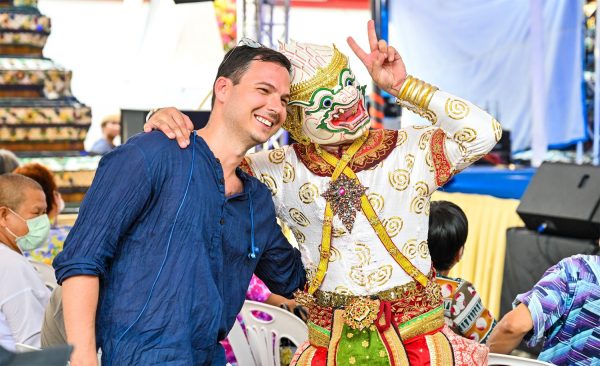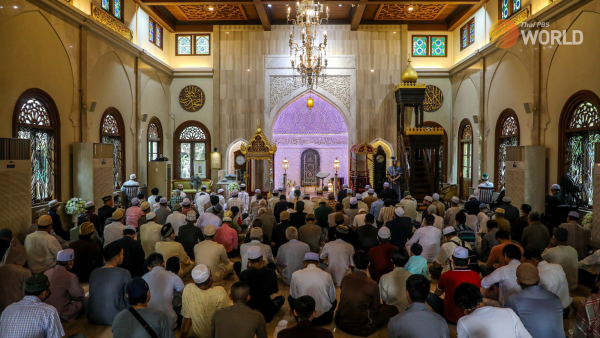Greeting the Ox in the quaintest of styles

Lost at not being able to celebrate in Chinatown? We offer an alternative that’s just as enjoyable, albeit in a very different way
Like many other countries around the world, Thailand, and more specifically the City of Bangkok, has cancelled the annual Chinese New Year Festival in its Chinatown, Yaowarat Road, in the interests of avoiding a mass gathering and potential super-spreader as the COVID-19 pandemic continues to rage. That means no dramatic dragon dances, eye-catching street performances, colourful parades or huge firework displays.
Forget the fancy party: You can still celebrate the Ox’s way.
We’re moving into the Year of Ox in the Chinese calendar, and we mark the passage of time in typical ox fashion which is, according to old Chinese wisdom, symbolic of wealth, prosperity, diligence, and perseverance. And with Yaowarat off limits, Talat Noi is the best place to enjoy a taste of Chinese New Year.
Nestled along the left bank of the Chao Phraya River, Talat Noi is one of the oldest neighbourhoods in Bangkok. It has been established for more than 200 years, and is home to Hokkien and Hakka-speaking Chinese descendants.

The Hokkiens are master blacksmiths and they built their shrine in the northern part of Talat Noi. Their love of metal is evidenced by the piles of used car engines all over the place. Talat Noi is one of the best places to find used car engines and parts.
The Hakka, on other hand, live around San Chao Rong Kuek Shrine and pray to the God of Wealth in a reminder that they were once poor.
There’s no better way to explore Talat Noi than on foot, where you can take in the sights, sounds, scents, and scenery first-hand.
The Chinese neighbourhood is filled with historic shrines, charming shophouses, elegant colonial buildings and narrow, winding alleys bursting with street art and second-hand car parts.
Lately, Talat Noi has been transformed into a hip and happening place with stylish coffee bars, art spaces, trendy boutiques and restaurants.
Here are some of the best places to enjoy a true taste of Talat Noi.
Tuck into duck dishes
“Anything that walks, swims, crawls, or flies with its back to heaven is edible,” is probably one of the most famous Chinese quotes and it’s worth bearing in mind when visiting Talat Noi. Hungry travellers love Talat Noi for its variety of street food, which ranges from egg noodles to chicken rice to crispy deep-fried pork belly. A favourite venue is Duck Noodle House (or Ped Tun Chao Tha) – a small restaurant reputed to serve the best Teochew braised duck in town.
Shrine of the shoemaker
Tucked away in an alley off Chinatown’s Soi Wanit 2, San Chao Rong Kueak was constructed by Hakka-speaking Chinese immigrants more than 100 years ago. San Chao Rong Kueak – literally the Shrine of Shoemakers – might not well-known but it is one of only a few shrines made by the Hakka. In terms of numbers, the Hakka-speaking community is small compared to the Teochew and other Chinese groups. They are rebellious, itinerant, bookish and good at making shoes. You will meet many of them over the Chinese New Year since they always show up for Cai Shen – the God of Wealth.
So Heng Tai Mansion
Talat Noi was once the main port for international trade and some Chinese families took full advantage of its status, earning vast sums of money from their trade. The So clan was one them, and their residence, the So Heng Tai Mansion, in the heart of Talat Noi speaks of their fortune. Built in the 1800s in Hokkien architectural style called “si tiam kim” or golden four points, the mansion is comprised of four houses surrounding a large courtyard. The grand house has two storeys made of teak, and it’s worth visiting for its carved wooden pieces and porcelain-embellished rooms.

Zhou Shi Kong Shrine
Talat Noi marketplace has been home to Hakka and Hokkien-speaking people since Bangkok’s early days. While the Hakka are known as master cobblers thanks to their excellent leather work, the Hokkein are blacksmiths who create all sorts of things out of metal. The leather and metal masters follow different deities and visit different shrines and Zhou Shi Kong is one of the oldest and most respected shrines among the Hokkien. It houses the statue of Zhou Shi Kong – the respected Chinese monk who lived in Fujian, Southeast China. Influenced by Qing dynasty architecture, the shrine is a heritage site in itself boasting woodcarvings, paintings and more.

Sui Long Wooden bucket
The Hokkien are not only good at working metal, but they are excellent at wood crafting too. Located on Thong Wat Road (opposite Wat Pathum Khongkha), the century-old Sui Long store has a reputation for making the finest wooden buckets. Made of teak, the wooden bucket has elongated boards tied together not with adhesive – but iron hoops. In bygone days, the Chinese used their wooden buckets to store rice grains, pickled vegetables and even carry warm water for a luxurious bath. Today, the wooden bucket makes a great interior accessory, sauna bucket and traditional wood bath. Sui Long is well worth visiting to admire its handiwork and for finding the bucket that suits you.

Patina Bangkok
You couldn’t spend a day in Bangkok without having coffee and cake. The city has invented a chill-out coffee culture involving Instagram-worthy interiors, photogenic sets of pastries, bread and, of course, of coffee, iced coffee to be precise. Patina Bangkok, in Vanich 2 alley, is the best place for flirting, debating and simply watching the world go by while sipping an iced coffee latte that’s not too sweet. With an industrial interior vibe, the coffee shop is in a time-worn Chinese shophouse with a gorgeous ceiling, small courtyard and attractive lighting. Pull out the chair, tuck in and relax.

(Photo by Phoowadon Duangmee)
Mother Roaster
If Patina Bangkok is too pretentious, Mother Roaster next to San Chao Rong Kueak Shrine is a nice, modest place for a quality brew and cake. Crafted with love by a ROK Presso Manual Espresso Maker, Pim – a 70-something barista – makes sure each cup is brewed fresh to order. Finding Mother Roaster can be quite a challenge to find as it’s not very obvious. Pim has transformed the old warehouse once used to store boats and car engine parts into a stylish coffee establishment in Talat Noi.
Baan Rim Naam
A couple, one expat and one Thai, have transformed an old warehouse constructed during the days of King Rama II into a lively restaurant and bar along the Chao Phraya River. It offers an intimate Thai dining experience with Thai tapas, home-crafted cocktails, and signature Thai dishes. With a garden, river breezes and plenty of space, Baan Rim Naam is a perfect hideout and dining spot for a sit-eat-chat retreat before calling it a day.

How to get to Talat Noi
Chao Phraya Express Boat is a convenient way to visit Talat Noi. Take the Yellow or Orange lines to Pier 4 (Marine Department); Talat Noi is right next door. Parking is available at CAT Building (Bt20/hour). Talat Noi is about five minutes on foot from the car park. Bicycles and scooters are available for rent at the River City Bangkok shopping mall.






